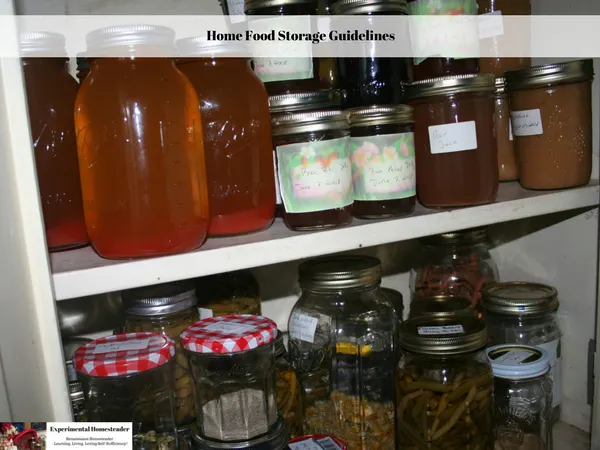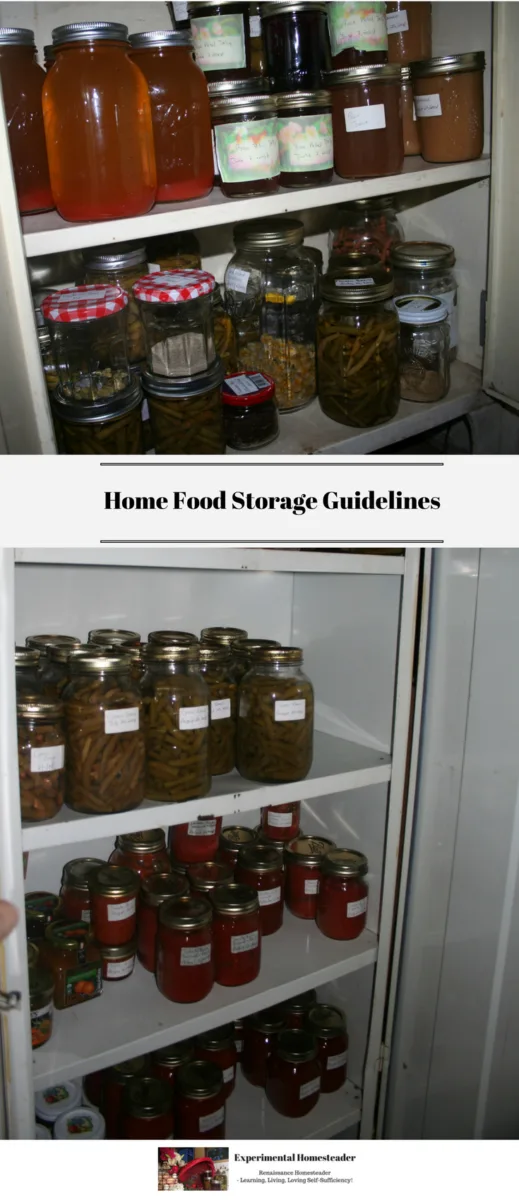Everyone eats different foods and different amounts of various foods which is why understanding home food storage guidelines is so important before your family starts to stock up.
Knowing how much to store depends on many things including the amount of space you have for food storage, what food storage method you intend to use and of course, what items you will use vs. those that are recommended but would go to waste because you wouldn't use them.
For example, stocking up on fruits and vegetables is recommended but there is no need to buy the ones you or your family won't eat.
Instead focus on the ones you intend to eat because even canned food doesn't last forever so the key it to buy what you like, rotate it so the older cans are being eaten on a regular basis but replenish what you do eat with canned foods with longer expiration dates.
How Will You Store Your Food?
Before stocking up consider how you will store the extra food you buy.
Do you have plenty of freezer room and a back-up plan in case the electricity goes out?
A great back up plan might be having a generator or solar power that runs your freezer or simply knowing how to can or dehydrate the food you have in the freezer using a wood fire or solar power.
Will you be canning all the food you store?
Dehydrating your extra food or using a root cellar is another option.
Whatever method you choose, make sure it works for your situation.
Frozen Food Storage Guidelines
This handy chart from FreezerLabels.net has recommended freezer food storage times.
It is great to print and hang on your freezer or you can even place it with your written food storage list.
Do Your Homework Before You Start
There are some general guidelines from the FDA to help get you started, but the reality is you will have to do your homework.
Some things you may not use at all and others you may use more of.
Take inventory of what foods you eat now and how much of each you go through, then use that as a starting point and compare it to the recommendations below.
Some things you will need to buy and some you can grow.
Keep in mind that anyone can stock up, even if you live in an apartment, but you must figure out the best way to store the food and how much you actually need.
The best way to save money when stocking up is to learn about the different times of the year when certain things - like sugar or flour are on sale - then plan to stock up.
FDA Food Storage Recommendations
Here are some yearly food storage recommendations according from the FDA.
These are based on one adult, so multiply this by the number of people in your family to get a better idea of what you will need - and remember these are only recommendations.
Meat – 200 pounds per year per person.
Flour – 300 pounds per year per person.
Sugar, honey or other sweeteners – 60 pounds per year per person.
Fats or oils – 60 pounds per year per person.
Salt – 5 pounds per year per person.
Powdered milk – 75 pounds per year per person.
Water – 375 gallons per year per person.
Vegetables and fruits – 700 pounds per year per person.
While this is not an end all of what you might need or want, it is a starting point.
How To Save Money When Stocking Up
The recommended amounts above is simply a way to get you thinking about what you may need in the way of long term food storage, but buying all of that at once would certainly take a substantial amount of money.
So how can you save money but still have plenty of food on hand?
Buy in bulk when food is in season.
Grow as much food as you can in your garden - and if possible, consider raising your own meat.
For example, let's say you grew 50 pounds of green beans this summer.
Well, if you preserved all 50 pounds of those green beans, simply subtract that 50 pounds from the estimated 700 pounds of fruits and vegetables and now you just have 650 pounds to go.
Now consider the savings because if you bought that 50 pounds of green beans you would have spent between $25 and $50 depending on the brand you bought.
While the initial investment to get set up preserving and storing your own food may seem like it doesn't save anything, in the end, you will come out ahead and best of all, be prepared for almost any emergency that comes your way from being snowed in to being short on cash.
<div
data-shortcode="mv_create"
data-attributes='{DQUOTEtitleDQUOTE:DQUOTEFood
Food
Use the buttons on the right side of the screen to share this article with friends or family who might find it useful. Pin the picture below to your pinboard on Pinterest for future reference.




